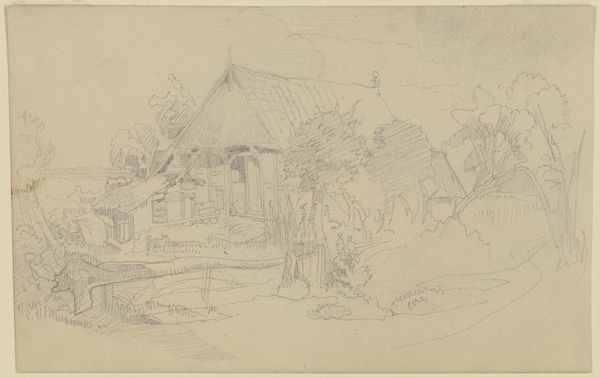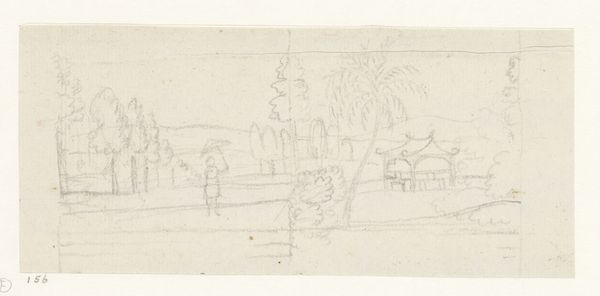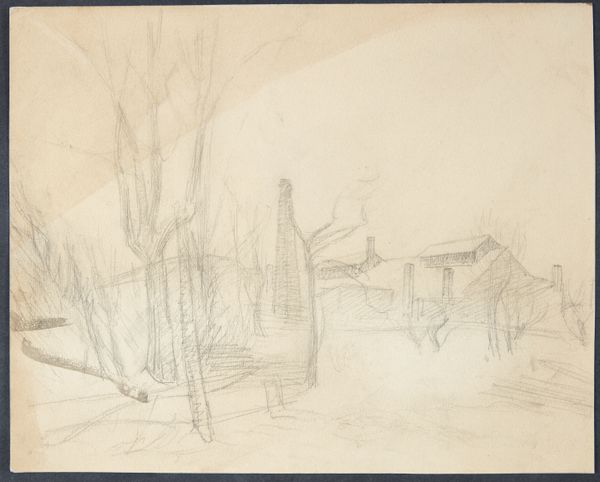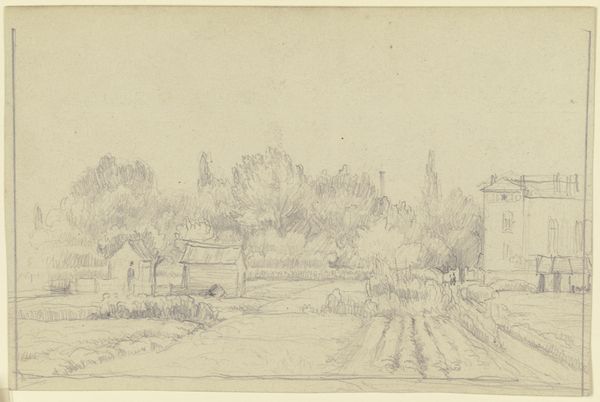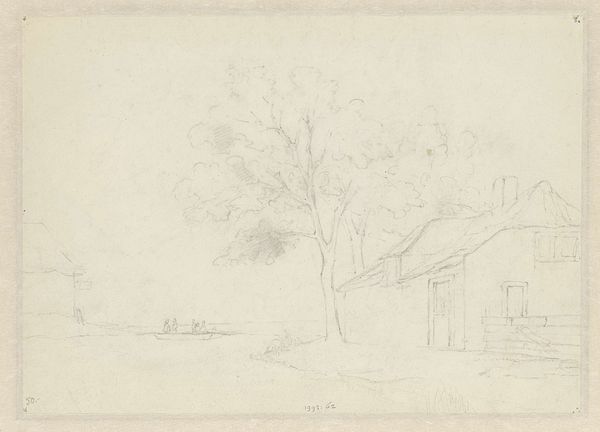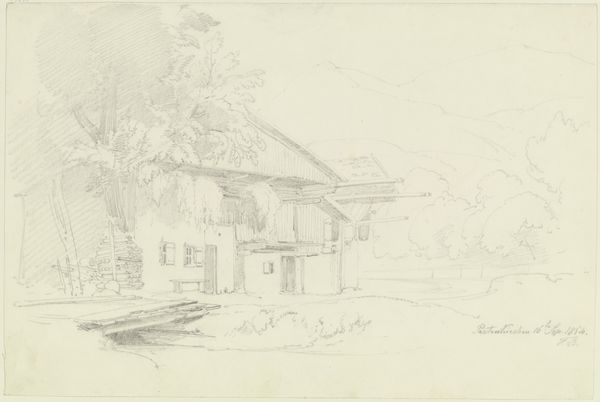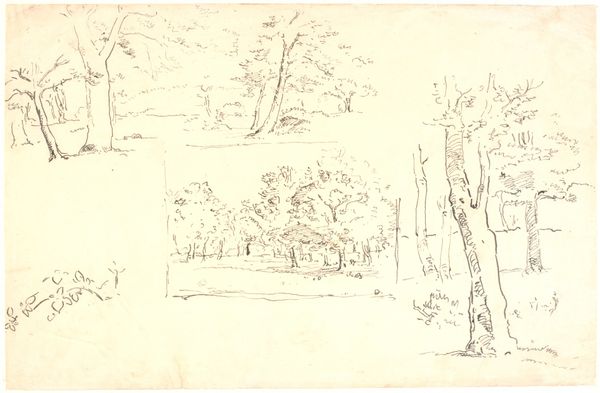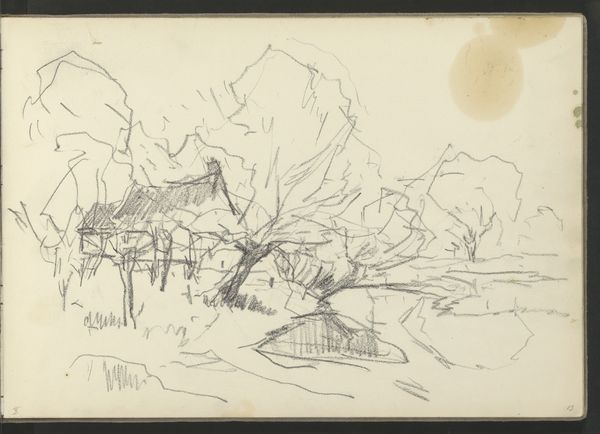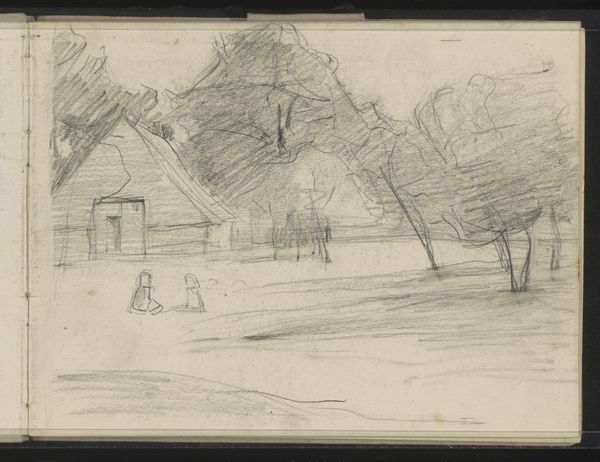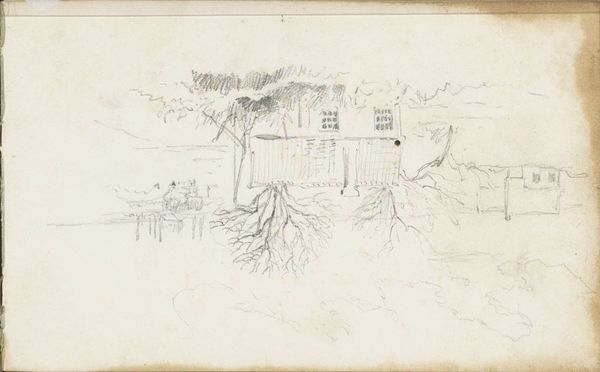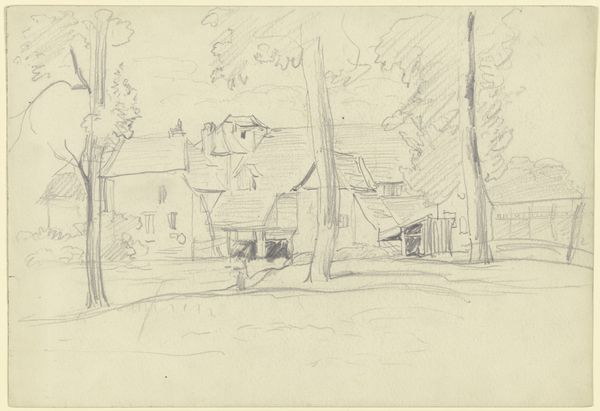
drawing, paper, pencil
#
drawing
#
landscape
#
paper
#
form
#
pencil
#
line
#
cityscape
#
realism
Dimensions: height 216 mm, width 273 mm
Copyright: Rijks Museum: Open Domain
Editor: This is Jan Striening's "Sketch of a Tea House," created sometime between 1865 and 1869. It's a pencil drawing on paper. I'm struck by the deliberate simplicity of the line work, especially given the intricate structure of the tea house itself. What do you see in this piece, looking at it through a Materialist lens? Curator: What interests me most here is the relationship between the "high art" of landscape drawing and the "low art" of architectural sketching. This pencil drawing serves not only an aesthetic purpose but also perhaps a practical one - documenting or planning the construction of such a tea house. Consider the labor involved: from mining the graphite for the pencil to the physical construction of the tea house itself. Editor: That’s fascinating. I hadn’t considered it in terms of labor. So, is the artist commenting on the act of building, of transforming materials, in addition to depicting a pretty scene? Curator: I think so. Notice the use of readily available and inexpensive materials. Paper and pencil make this scene accessible – reproducible. It speaks to the democratization of both art and leisure, suggesting that such structures and the activities within them were becoming increasingly commonplace. How might the materials available at that time have influenced Striening’s technique? Editor: Good point! The immediacy of pencil on paper – the lack of intense refinement – emphasizes accessibility. There isn’t a barrier of preciousness, as there might be with oil paints or bronze sculpture. Curator: Exactly. It collapses the distance between the artistic process, the subject (a site of potential social interaction and consumption), and the viewer. A simple sketch made from simple things to record everyday life. It’s about art making something ordinary special. Editor: I see what you mean. Considering the materials used makes it feel less like a detached observation and more like a piece connected to real, tangible experience. Curator: And a potential commodity that can be shared widely, for a low price, and maybe, copied. This little drawing prompts us to rethink our definitions of art and accessibility.
Comments
No comments
Be the first to comment and join the conversation on the ultimate creative platform.
